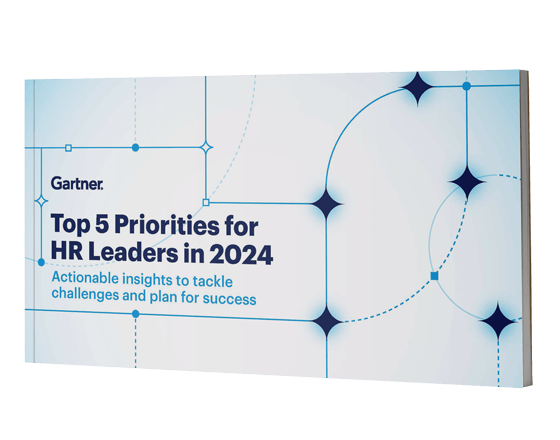How to improve your diversity recruitment strategy
So you’ve decided that you want to make changes to your business by making it more diverse. An important part of achieving equality, diversity and inclusion is going to be instilling diversity recruiting strategies. Before you jump in and begin to make changes, take a step back and look at the bigger picture. Think about your ultimate goal, and how you are going to measure the success of your efforts. If you fail to do this then you could be working very hard but with no knowledge of whether you are truly improving your diversity recruiting strategy. The results may be disappointing and this is not what you want.
What is a diverse recruitment strategy?
Begin by putting together a team to work on the project with yourself as the leader. Establish the existing barriers to inclusion in your workplace, identify the measures that want to achieve and then agree on percentages. It could be that your focus is on bringing older or younger people on board, adding more people from a diverse ethnic background or boosting the number of women you have in the team. The choices are yours. Only once you have this outline in place should you begin improving your diversity recruitment strategies.
Why is a diverse recruitment strategy important?
It’s a given that most people want to work in an environment that is inclusive, ethical that they feel comfortable in. Many company cultures however lack diversity, a fact that is becoming increasingly prevalent and criticised. Many organisations are now making it their mission to diversify their workforce and recruit people from all backgrounds, genders, religions etc.
No matter how hard you try, if you haven’t thought of a thorough and engaging recruitment strategy, potential employees aren’t going to apply. If job-seekers feel your company’s equality and diversity messaging is disingenuous, you’re unlikely to be successful in your efforts as prioritising diversity is inherently the right thing to do, and not something to jump on the bandwagon of.
When employees bring their entire, authentic selves to work, they’re free to be more creative, energetic, and collaborate more with their coworkers. Creating a more diverse workforce helps to build trust and allows people to learn from their coworkers. Companies that are more diverse have better retention and are more likely to be seen as innovators in their industry.
Ways of improving your diversity recruitment strategy
Let’s look at a few ways of improving your diversity recruiting strategy:
Improve your job ads
This is easily done by using the right language. Your advert needs to appeal to a diverse range of candidates. Get an expert to write the ad, taking no chances with the content. Take care of how you speak to prospective job seekers so that you don’t exclude anyone, for example removing gender-specific or ableist language. Include the proclivity you think best suits the role and the impact you would like the person to make.
Use a variety of sources
If you post job ads in the same place, you’ll get the same sort of people applying. Be varied and target a variety of areas. If you have only previously posted on the company website, try using jobcentres, social media and a good recruitment agency. You need to go to places where your type of candidate spends time instead of waiting for them to find you. Try reaching out to organisations with already diverse teams, ask employees for recommendations and referrals from their networks, and in general, be willing to try something new to get a new result.
Offer apprenticeships and internships
Part of your diversity recruitment strategy can be to offer apprenticeships/internship positions to specific types of candidates. Get in touch with schools, colleges and 6th forms. Use social media to spread the word. If there are any local projects in place that encourage your type of applicant to get in touch, team up with them.
Make diversity part of your brand
When your brand spreads the word, show (and evidence) that you value candidates from all backgrounds, that you value diversity of impact regardless of traditional demographics and that it is deeply ingrained within your corporate culture.
Utilise current employees to talk about their experience and how they feel valued for the impact they are free to make. Incorporate their stories when promoting new opportunities. Do this the right way and you will find diverse candidates applying for vacancies, comfortable in the fact that they will be welcome. Once you develop a reputation for being this type of company, diverse growth will become the norm.
Don’t just say it, mean it
Refresh your companies E&D policies
If your company policies don’t tally with the version of the company that you are portraying, how is the right atmosphere going to be maintained?
The HR department needs to be living and breathing diversity in both practices and policies. When new staff are taken through the onboarding process, they will then feel comfortable, reassured of your stance on inclusivity.
Incorporating more flexible holidays to fit in with school breaks or religious festivals and even adaptable working hours. Ask for employee feedback – this can be done via anonymous surveys if needed. Listen to what your workforce is saying and think of ways that you can encourage everyone to feel valuable.
Get used to working with blind CVs/interviews
Personal information should be ignored where possible. If candidates are filling in an application form, this should be on a separate sheet so that it can be hidden from view. Name, age, sex, religion ethnicity, gender preference – all of these should be separate. The aim is to remain unbiased so you should filter out applicants for an interview in the same way, although this can only occur at the beginning of the process before you talk on the phone or meet.
Increase your application process’ accessibility
Adapt your onboarding and interviewing process to meet the needs of every individual, regardless of their personal limitations. For some people, giving powerpoint presentations is not the best way to work, for others, they might find face-to-face interviews hard to attend. Your recruitment process should be flexible to those with both mental and physical limitations.
Make use of AI to filter CVs
This is a failsafe way of removing bias and remaining impartial. Use suitable software to filter candidates based upon skills and experience set by you, ignoring demographics and personal information.
Include several diverse candidates within your shortlist. By doing this, you have more chance of finding that one that fits well. By deliberately including several diverse candidates within your shortlist, the company is automatically providing would-be employees from diverse backgrounds with a fair chance.
Conclusion
Recruiting using a diverse system means that you end up with the right person for the job with zero discrimination taking place.
By integrating the GC Index into your recruitment process you are able to add an extra dimension that will align your company’s approach to what is expected in the world of work today. The GC Index adds to the current traditional frameworks, enabling HR to assess the impact and contribution they require from the candidate within a set role. They can now evaluate how each candidate will perform as part of a team and can benchmark them against set criteria regardless of what traditional box society wishes to impose upon them.
Get in touch with our team today to find out more about how we can support you in becoming a true representation of an organisation that is revolutionising diversity in the workplace.



